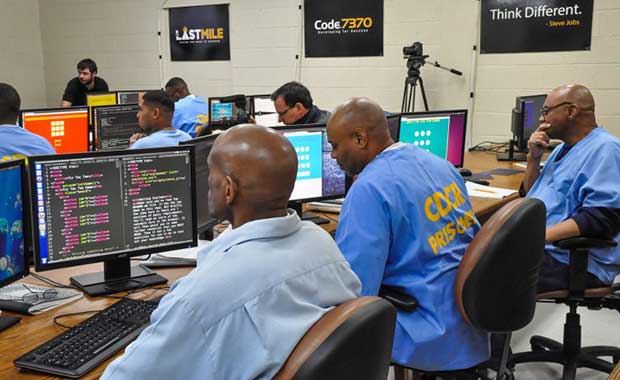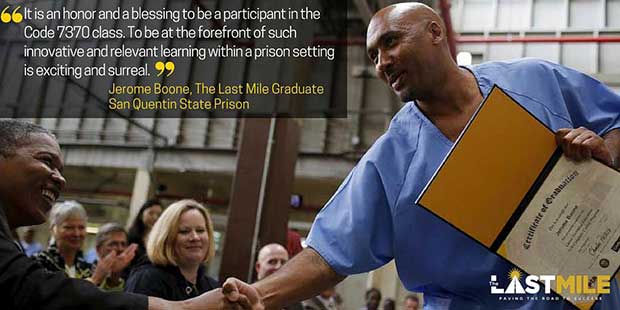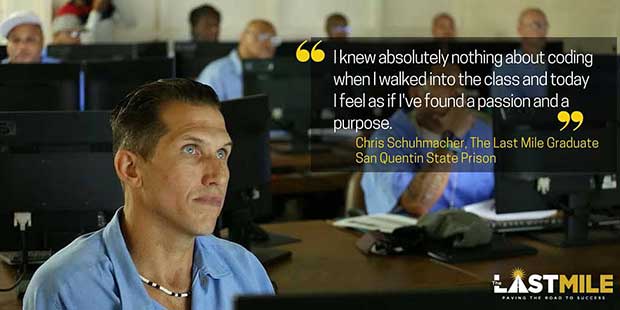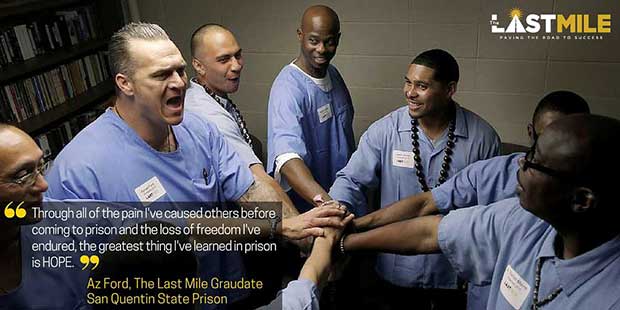Advertisement
San Quentin Inmates Learn Computer Coding and Find Redemption in Life After Prison
| By Jason Owen
Advertisement - Continue reading below


“When I began my talk, I noticed that the men were fixated on every word. There weren’t any distractions. There are no cell phones in prison.”
Those are the words of Chris Redlitz, founder of The Last Mile, a six-month business and entrepreneurial program that teaches prisoners computer coding and is helping them find new purpose in their lives after their time is served.
“When I was finished speaking, hands went into the air,” Redlitz explained in a recent TED talk. “My thirty-minute talk turned into a two-hour discussion. These men were prepared, motivated, and committed to learning how they could create a better life after they served their time.”
In 2010, after Redlitz’s first trip to San Quentin prison – one of the most dangerous in the country – he partnered with the California Department of Corrections and Rehabilitation and the California Prison Industry Authority (CalPIA) to create The Last Mile. In 2014, they launched Code.7370 San Quentin, the first computer programming curriculum in a U.S. prison system.

“The results have been extraordinary,” said Redlitz. “Some of our graduates will be released this year and we are confident they will be hired as software engineers.”
The program has been so successful in San Quentin that it is expanding to five additional prisons in the state, including two women’s prisons. Redlitz is optimistic a national program can garner similar results.
Redlitz was spurred to action after some preliminary research on the U.S. prison system years ago revealed some startling trends all across the country.
“What we learned about issues facing the prison system today was shocking,” said Redlitz.
“1. From 1972 to 2010, the number of people in prison in the U.S. had increased 700 percent.
“2. 25% of the world’s incarcerated population is in the U.S.
“3. In California, we spend more on prisons than on higher education.
“4. It costs around $47,000 to keep one prisoner in jail in California for one year.
“5. More than 67% of the state prisoners released in 2005 were arrested within the next three years.”
Added up, Redlitz concluded, “You don’t have to be a professional investor to realize that this is a bad investment for taxpayers … If we could reduce recidivism by just 5 percent, we could save billions of dollars over the next ten years.”
So far, the results seem to speak for themselves.
“I knew absolutely nothing about coding when I walked into the class and today I feel as if I’ve found a passion and a purpose,” said Chris Schuhmacher, one of the graduates of the program. “I feel more and more prepared for life after prison.”
“None of [our prisoners] have gone back to jail,” Redlitz explained. “With hard work and determination, these men have overcome serious obstacles and created a positive path for their future.”
It’s a brighter future for them. It’s a brighter future for all of us.

Advertisement - Continue reading below
Share
On Facebook
